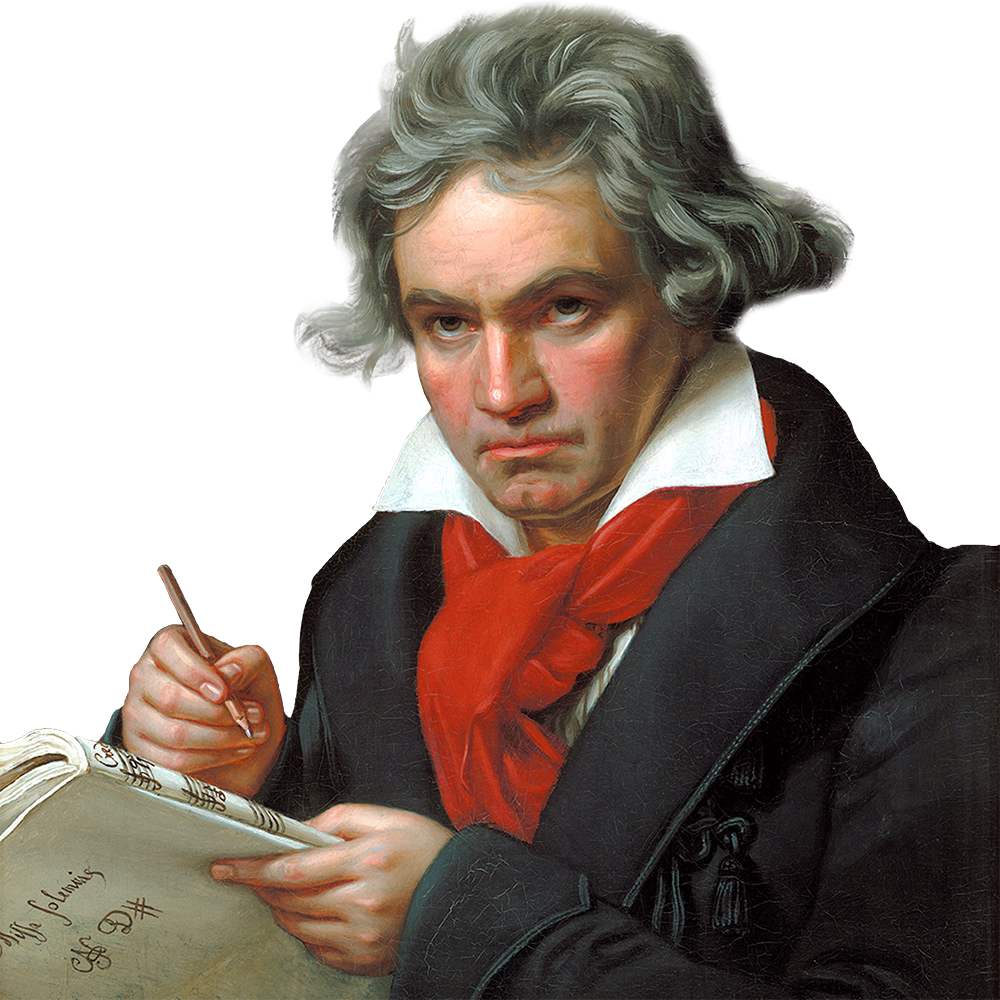
|
Symphony No. 8 in F minor, Op. 93 Allegro vivace con brio |
Composed: Estimated length: |
|
Born on December 16, 1770, in Bonn (in present-day Germany); Died on March 26, 1827, in Vienna, Austria |
|
|
First performance: February 27, 1814, in Vienna, with the composer conducting. |
|
|
First Nashville Symphony performance: March 28, 1950, with William Strickland conducting at War Memorial Auditorium. |
|
There’s a longstanding cliché that Ludwig van Beethoven’s odd-numbered symphonies more boldly challenge conventions, while the ones with even numbers are allegedly “tamer” and manifest a more-relaxed attitude in comparison with the epic ambitions of their companions.
As should be expected, these kinds of generalizations fail to do the music justice, leaving out the essential details that make each symphony a unique world unto itself. Beethoven sketched out ideas for both the Symphony No. 7 and No. 8, for example, around the same time in 1812, and then composed them back to back. His innovative exploration of rhythmic momentum plays a dominant role in both scores.
The Eighth’s boisterously inventive spirit is apparent from the outset. Beethoven’s idiosyncratic use of dynamics and rhythmic energy encompasses the charming, good-natured attitude of the opening as well as passages in which a sense of almost primitive forces pressing us onward. The composer himself once said that he had composed the Symphony No. 8 in an “unbuttoned” spirit. The work’s many instances of rugged humor prove the point.
The final movement shows the composer in his most strikingly, even aggressively, original vein. Beethoven gives this finale, a hybrid of rondo and sonata form, a surprising extent and scope and crowds it with the Symphony No. 8’s most substantial ideas. In one of the funniest passages the composer ever wrote, he extends the coda to outrageous proportions, hammering away as if to say “The End … no, really … The End!”
WHAT TO LISTEN FOR
The main theme recycles a concise, six-note phrase into ever-varied units, connecting them into an extended thematic complex. Throughout the movement, this tension between compression and expansion is sustained and reinforced.
In lieu of a soul-stirring Adagio, Beethoven introduces an interlude that appears to mock the very concept of measuring musical time (an idea Haydn had played with in his Symphony No. 101, otherwise known as “The Clock”). The woodwinds sustain an incessant “tut-tut-tut” pulse. The melody is wittily integrated into this mechanistic time-keeping, but, in the final measures, the situation unravels into manic frenzy.
Beethoven’s decision to replace his customary high-energy Scherzo with a minuet in the Eighth Symphony is occasionally regarded as a return to “convention,” but his unmistakable stamp is evident in the off-kilter accents. And in the finale, Beethoven presents a deceptively straightforward main theme that teases the ear, creating ambiguity and tension through rhythmic and dynamic patterns. The persistence of a jarring C-sharp blast (an absurd non-sequitur in the “language” of the F major home key) becomes an important narrative issue to be resolved. The exaggeratedly elongated final section of the symphony finally makes sense of this strange “wrong note.” First, Beethoven uses it to detour the music onto another track, but the trumpets and timpani then heroically steer the orchestra back into the right direction.
Once the Promised Land has been safely reached, Beethoven has the whole ensemble pound relentlessly away, accentuating the home of F major with hilariously bombastic insistence. It’s as if Beethoven is poking fun at his own “heroic” style, with the musicians collectively competing to make sure they get the last word in.
Scored for pairs of flutes, oboes, clarinets, bassoons, horns, and trumpets, along with timpani, and strings
− Thomas May is the Nashville Symphony's program annotator.